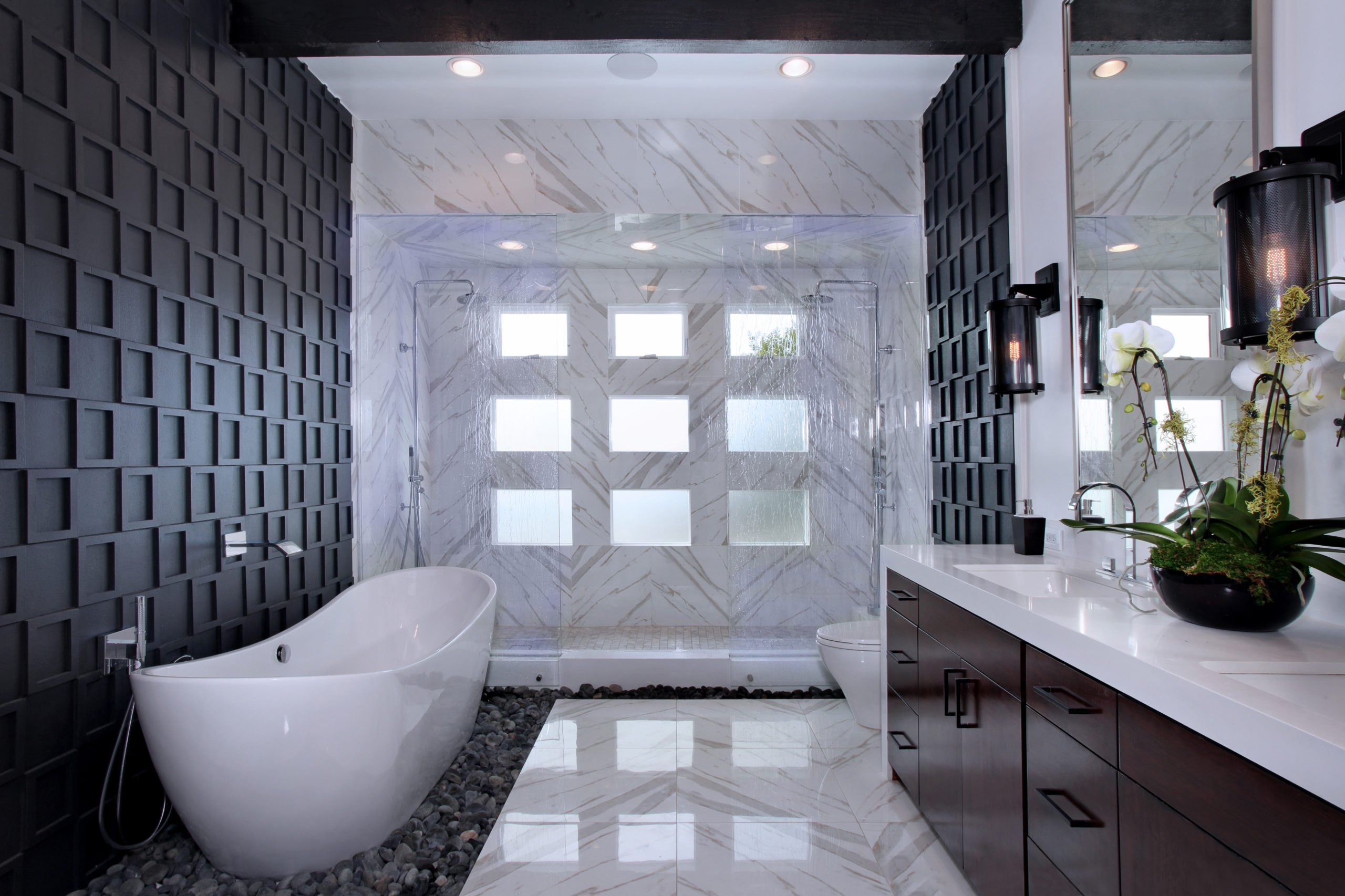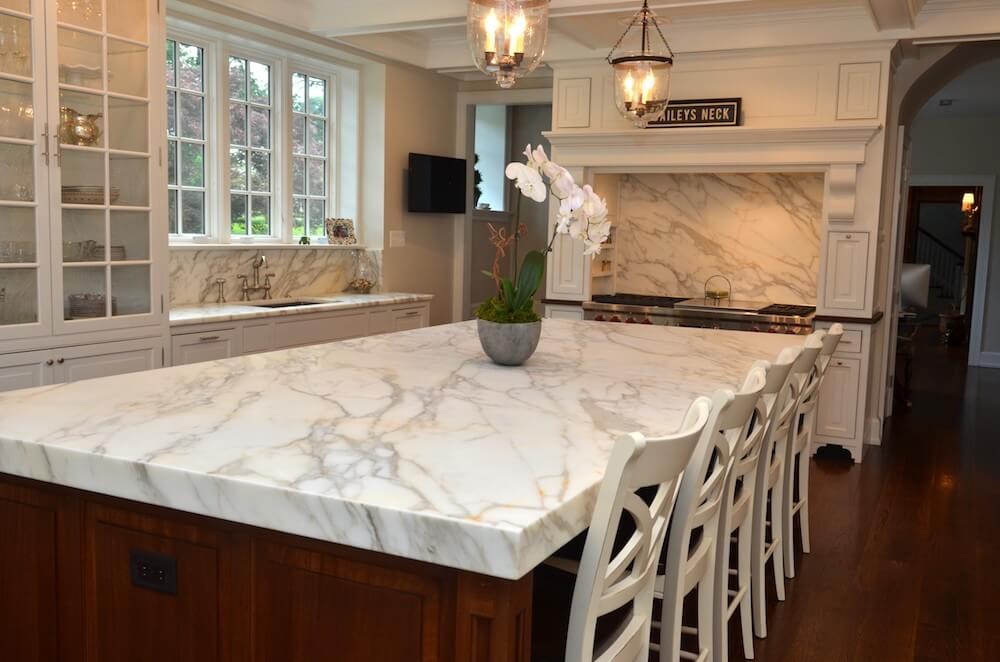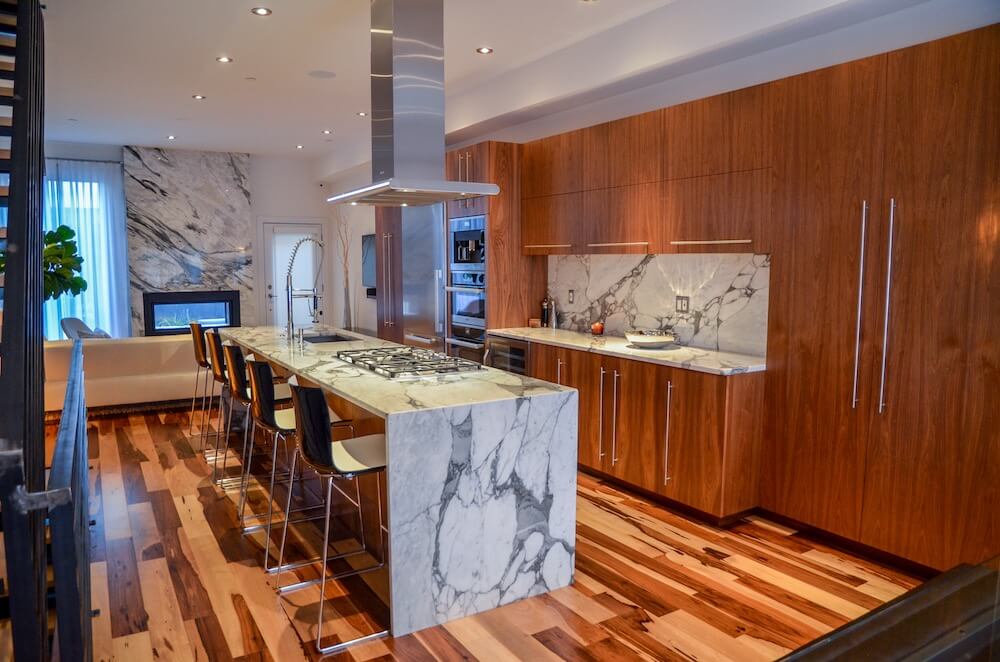Marble is one of the most exclusive materials used in interior design; its presence in any room brings about a sense of timeless elegance. Being quarried from mountainous regions across the globe, this natural stone has a crystalline structure with natural veins of mineral deposits that traverse its slabs. Marble adds character and classic beauty to help level a modern kitchen or bring opulence to a spa-like bathroom. And when it comes to marble, quality matters. Here, we will discover the factors that set the price for the different types and styles of marble.
Is Marble Expensive?
Many homeowners and commercial property owners think marble is not a budget-conscious surface material; however, there is a wide price range. Marble countertop cost per square foot usually lands between $75 and $250, give or take. The fluctuation in price is affected by the location of the quarry, demand, availability, and actual slab choice and thickness. While all marble is formed the same way — limestone is exposed to high temperatures and pressures — they are not all equal in quality and beauty, which will determine the price.
Which Is the More Expensive Natural Stone — Marble or Granite?
Marble and granite are two of the most common kitchen countertop materials you’ll come across when looking to remodel your kitchen or bathroom. While natural stone may be a must-have, the cost differences between marble slabs and granite slabs are undoubtedly going to play a role in your decision-making process.
While both the cost of marble and granite countertops are subject to change, generally, the latter tends to skew a bit less expensive. However, the difference in the two stones’ properties is going to affect the feel and function of your kitchen, with marble countertops giving off a more high-end look, and granite, while beautiful, being the workhorse of the everyday kitchen. So, at the end of the day, we believe the question of “what is more expensive, granite or marble” ought to consider another pertinent query — “which material is right for me?”
The cost of marble slabs isn’t a single figure; varying origins play a substantial role in how much you can expect to budget for.
Calacatta: The Prestige Marble
Calacatta is widely regarded as the most expensive marble available. While it makes for a gorgeous, practical countertop, aesthetics and functionality are not the only contributing factors to Carrera marble price tags. Its rarity positions it as an exclusive feature that showcases limited luxury.
The reason Calacatta is the most expensive marble is that it is only available from one quarry in the world, located in Carrara, Italy; production is limited and controlled. Calacatta marble has a distinctive look with bold veining, and the most expensive Calacatta slab has a pure white background with dark, dramatic veins; however, there are other stunning hues and patterns as well. Colonial Marble & Granite offers this exclusive marble in dozens of variations, including Calacatta OMG, Calacatta Viola, Calacatta Splendor, Calacatta Bluete Marble, Calacatta Lincoln Honed, and many more. Variations have undertones of ivory, grey, brown, and gold with dramatic veining in different patterns.
Carrara and Other More Affordable Marbles
If you’re looking for a more affordable marble, Carrara is a good alternative. It, too, is mined in the mountains of Carrara, Italy, but has a different design profile. Carrara has a grey background with soft and wispy veining. The Carrara marble countertop cost averages about $90 per sq. ft.
While Italy is the most exclusive location for marble to be mined, there are many other countries that have quarries, including the U.S., China, Brazil, India, Canada, Afghanistan, and Turkey. Many miners from other countries try to pass off their marble as Italian marble; this is where the “cheap” slabs come in. Also, some quarries will send the slabs to Italy to be cut, thus hiding behind the fact that they were not actually mined in the Carrara region. When shopping for marble, just be aware and ask questions about the origin of the marble.
What Factors Into the Cost of Marble?
From Calcatta to Carrara and beyond, the cost of marble slabs is determined by several factors, including:
Availability: The more scarce the stone, the higher the cost
Color: When it comes to marble, less color is often considered more valuable. Marble slabs with little to no veining can be hard to find.
Imperfections: Fissures, pits, and cracks affect the price of a marble slab
Marble slab thickness: The thicker the slab, the more bold the statement — and the higher the cost.
Edging and finishing: Specialty edge profiles and finishes customize the value of a marble slab.
How to Keep Costs Down
With proper upkeep and regular sealing, marble is worth the investment. There are a few ways to keep costs down if a pure Calacatta or Carrara marble slab is out of budget.
- Work with a knowledgeable Colonial Marble & Granite team member for all available options
- Be flexible with shades and patterns — select darker tones
- Pick up remnants for sale from leftover jobs for smaller applications
- Select prefabricated marble vanities and countertops
- Select slabs with slight imperfections
Buying marble for your kitchen or bathroom surfaces can be a bit overwhelming. Before starting the selection process, don’t be shy to get help from a professional at one of the Colonial Marble & Granite showrooms, where there is a vast selection of styles and colors available for any location in your home or business. Get a jumpstart on the selection process by visiting the bathroom or kitchen visualizer, where you can see our marble options paired with different design elements. Contact us today to start your marble journey!





